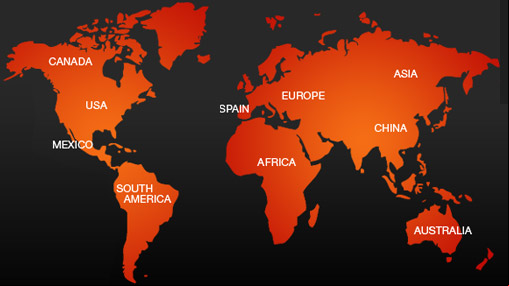- Home About RM Minerals
- Virtual Photo Museum Blog RM
- Microscopy and instruments How to Buy Disclaimer
Copyright 2010-2025
rosellminerals.informativomineiro.com



Group of stalactitic aggregates of barite crystals. They are very aerial disposed and formed by bladed crystals with chisel-shaped terminations. With a really good brilliance, some transparence and white color. A notable recent find from this Mediterranean mining area that never stops to surprise us. 37595c
Group of very sharp barite crystals showing two growth generations. First one is formed by good size tabular crystals and it's coated by second generation. This second growth phase presents stalactitic-shape aggregates formed by bladed crystals and chisel-shaped terminations. With a really good luster and snowy white color. A notable recent find from this Mediterranean mining area that never stops to surprise us.
Globular aggregates of prehnite with a delicate light green color. With well defined and very bright crystal terminal faces. We can observe the radial growth on a sectioned aggregate. These brilliant specimens are quite unusual in this closed quarry.
A very rich group of siderite crystals from an extinct locality such as Arteal Tunnel. It occurs as aggregates of lenticular crystals with parallel growths, very bright and deep brown color. With a second siderite generation of small sharp crystals. In fresh fracture green color siderite is observed.
A very rich group of siderite crystals from an extinct locality such as Arteal Tunnel. It occurs as aggregates of lenticular crystals with parallel growths, very bright and deep brown color. In fresh fracture green color siderite is observed. Very aesthetic.
At the beginning of 2014, reviewing some specimens from the Santa Matilde open pit we found into the vugs some groups of lanceolated, fibrous or equidimensional crystals, with pink, beige to white colours, those aroused our interest. After some analysis we could identify as fluorcalcioroméite species (Ca,Na)2Sb5+2O6F,OH), with a small percentage of oxyplumboroméite (Pb2Sb2O7, due to the presence of lead).
Both species belong to the isometric system. But the observed symmetry indicated that they are, highly probable, a pseudomorph after stibnite and/or bournonite crystals. This is the first report of this mineral in the Iberian Peninsula. Nowadays this quarry is completelly filled by rubble. In this specimen we can see some aggregates, one of them predominant, formed by several lanceolated to needle-like crystals, with luster, beige to ocher tone, accompanied by aesthetic baryte crystals. We will send a copy of the analysis (SEM-EDS, XRD) to the buyer.
At the beginning of 2014, reviewing some specimens from the Santa Matilde open pit we found into the vugs some groups of lanceolated, fibrous or equidimensional crystals, with pink, beige to white colours, those aroused our interest. After some analysis we could identify as fluorcalcioroméite species (Ca,Na)2Sb5+2O6F,OH), with a small percentage of oxyplumboroméite (Pb2Sb2O7, due to the presence of lead). Both species belong to the isometric system. But the observed symmetry indicated that they are, highly probable, a pseudomorph after stibnite crystals. This is the first report of this mineral in the Iberian Peninsula. Nowadays this quarry is completelly filled by rubble. In this specimen we can see two vugs with rich aggregates formed by lanceolated to fibrous crystals, with luster, beige to pink color, accompanied by aesthetic baryte crystals. We will send a copy of the analysis (SEM-EDS, XRD) to the buyer.
At the beginning of 2014, reviewing some specimens from the Santa Matilde open pit we found into the vugs some groups of lanceolated, fibrous or equidimensional crystals, with pink, beige to white colours, those aroused our interest. After some analysis we could identify as fluorcalcioroméite species (Ca,Na)2Sb5+2O6F,OH), with a small percentage of oxyplumboroméite (Pb2Sb2O7, due to the presence of lead). Both species belong to the isometric system. But the observed symmetry indicated that they are, highly probable, a pseudomorph after stibnite crystals. This is the first report of this mineral in the Iberian Peninsula. Nowadays this quarry is completelly filled by rubble. In this specimen we can see rich aggregates formed by lanceolated crystals, with luster, beige to ocher color, accompanied by aesthetic baryte crystals. We will send a copy of the analysis (SEM-EDS, XRD) to the buyer.
At the beginning of 2014, reviewing some specimens from the Santa Matilde open pit we found into the vugs some groups of lanceolated, fibrous or equidimensional crystals, with pink, beige to white colours, those aroused our interest. After some analysis we could identify as fluorcalcioroméite species (Ca,Na)2Sb5+2O6F,OH), with a small percentage of oxyplumboroméite (Pb2Sb2O7, due to the presence of lead). Both species belong to the isometric system. But the observed symmetry indicated that they are, highly probable, a pseudomorph after stibnite crystals. This is the first report of this mineral in the Iberian Peninsula. Nowadays this quarry is completelly filled by rubble. In this specimen we can see some aggregates formed by several needle-like crystals, with luster, beige to white color, accompanied by aesthetic baryte crystals. We will send a copy of the analysis (SEM-EDS, XRD) to the buyer.
At the beginning of 2014, reviewing some specimens from the Santa Matilde open pit we found into the vugs some groups of lanceolated, fibrous or equidimensional crystals, with pink, beige to white colours, those aroused our interest. After some analysis we could identify as fluorcalcioroméite species (Ca,Na)2Sb5+2O6F,OH), with a small percentage of oxyplumboroméite (Pb2Sb2O7, due to the presence of lead). Both species belong to the isometric system. But the observed symmetry indicated that they are, highly probable, a pseudomorph after stibnite crystals. This is the first report of this mineral in the Iberian Peninsula. Nowadays this quarry is completelly filled by rubble.
In this specimen we can see some several aggregates in the cavity formed by lanceolated to fibrous crystals, with luster, beige tone, accompanied by aesthetic baryte crystals. We will send a copy of the analysis (SEM-EDS, XRD) to the buyer.
At the beginning of 2014, reviewing some specimens from the Santa Matilde open pit we found into the vugs some groups of lanceolated, fibrous or equidimensional crystals, with pink, beige to white colours, those aroused our interest. After some analysis we could identify as fluorcalcioroméite species (Ca,Na)2Sb5+2O6F,OH), with a small percentage of oxyplumboroméite (Pb2Sb2O7, due to the presence of lead). Both species belong to the isometric system. But the observed symmetry indicated that they are, highly probable, a pseudomorph after stibnite crystals. This is the first report of this mineral in the Iberian Peninsula. Nowadays this quarry is completelly filled by rubble. In this specimen we can see some aggregates, one of them predominant, formed by several lanceolated to needle-like crystals, with luster, beige to ocher tone, accompanied by aesthetic baryte crystals. We will send a copy of the analysis (SEM-EDS, XRD) to the buyer.
Specimen with a good size formed by a rich group of tabular baryte crystals, very sharp and brilliant, showing pseudohexagonal forms and with a uniform ocher color. A mine poorly represented in collections.
Druse formed by complex interpenetrated sphalerite crystals, with toasted honey color, some transparence and accompanied by calcite crystals. A huge size specimen from a classic Spanish locality.
On a thin limonite matrix we can enjoy two aggregates and aesthetic baryte rosettes formed by lenticular crystals are arranged. Both aggregates are complete, but one of them shows an unusual perfection. It comes from a mine known for its ocher tone barytes,but this shape is not very common in this mine.
A floating almandine crystal with a good size for the locality. Defined faces and rounded edges (very common), with an intense brown to black color. Acompanied by a interpenetrated minor almandine crystal. A Spanish classic.
A huge size andalusite prismatic crystal, with defined faces and rounded edges. A Spanish classic that many of us have told about and we present here for you.
Group of cubic fluorite crystals showing well defined faces and edges, with echeloned polysynthetic growth. Excellent transparence and blue to colorless depending on light source. On a quartz layered rocky matrix. A sample with characteristics that make it very interesting for fluorite collectors and from a classic Spanish locality.
Group of cubic fluorite crystals those show defined faces and edges with very interesting staggered polycrystalline growths. Its color varies from bluish violet to purple depending on the type of incident light. Good transparency showing us some color zoning. An aesthetic specimen from a classic Asturian locality.
On a milky quartz matrix we can enjoy some cubic fluorite crystals. One notable for its size. It shows transparency and color zoning. This color zoning is very interesting because it takes the form of an octahedron with an intense violet included in a colorless cube. It is not easy to find samples of fluorite from Cerro Muriano; so even a small dent in a corner, this piece is great quality for the locality.
Large group of cubic fluorite crystals showing well defined faces and edges. The yellow honey color, brilliance and transparency of the crystals give a very aesthetic touch to this piece. Viewed under magnification they are peppered by small globular aggregates of pyrite. It is accompanied by white dolomite.
Brilliant and elongated gold nugget that suggests rounded and flattened subhedric crystals. It belongs from an area known till the middle of last decade for its gold nuggets. The sample shows a good size. An opportunity to add a Spanish gold to your collection. Weight: 3.49 g. / 0,1231 oz.
Brilliant gold nugget that suggests rounded subhedric crystals and a surface with concavities. It presents quartz granules as inclusion. It belongs from an area known till the middle of last decade for its gold nuggets. The sample shows a good size. An opportunity to add a Spanish gold to your collection. Weight: 2.99 g. / 0,1055 oz.
Mamellonar aggregates of smithsonite crystals with a very nice orange to brown color covering cavities in the rocky matrix. From a recent find (2014, april) in one of the biggest "cortas" (quarry) of Portmán mining area.
Mamellonar aggregates of smithsonite crystals with a very nice orange to brown color covering cavities in the rocky matrix. From a recent find (2014, april) in one of the biggest "cortas" (quarry) of Portmán mining area.
A curiosity that I found aesthetic and mineralogically interesting. Usually the menilite opals are found in a marlstone matrix, but in this case we found it included in gypsum with clay inclusions. A Spanish curious specimen...
